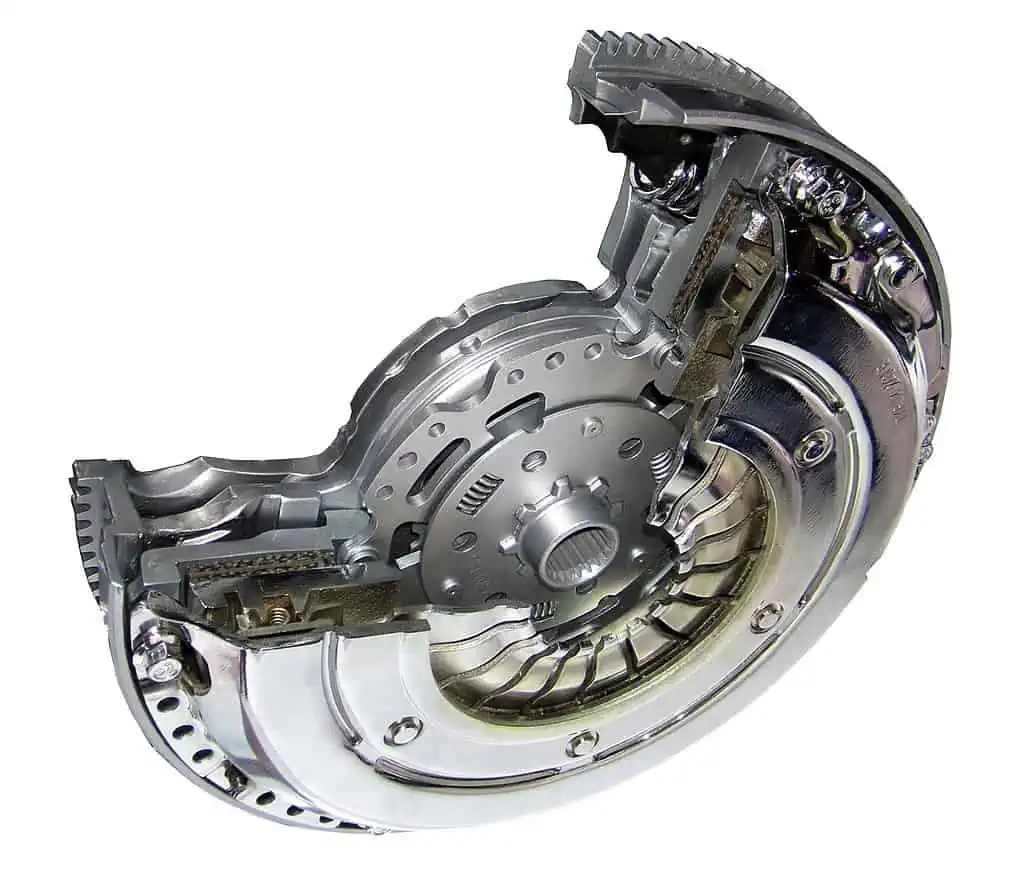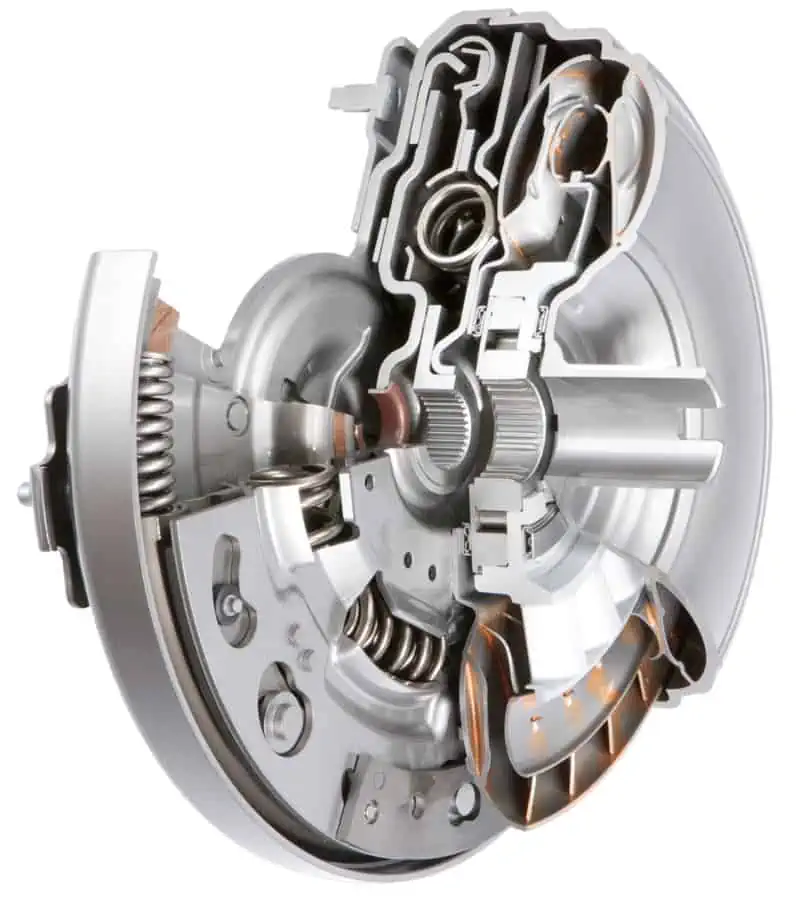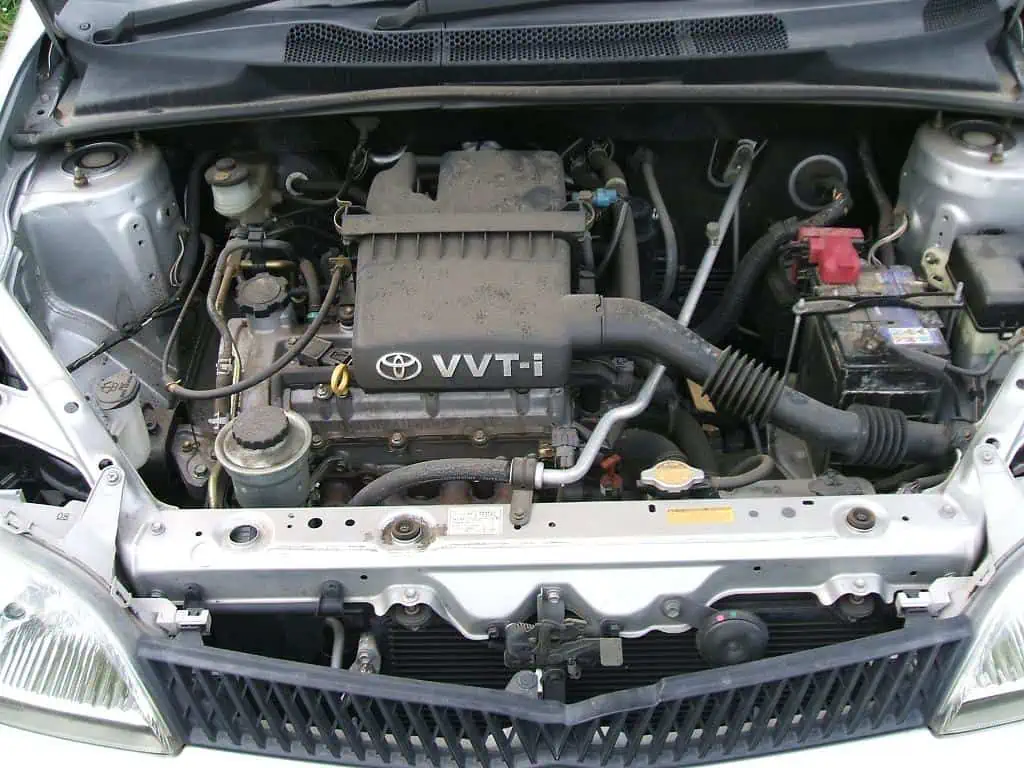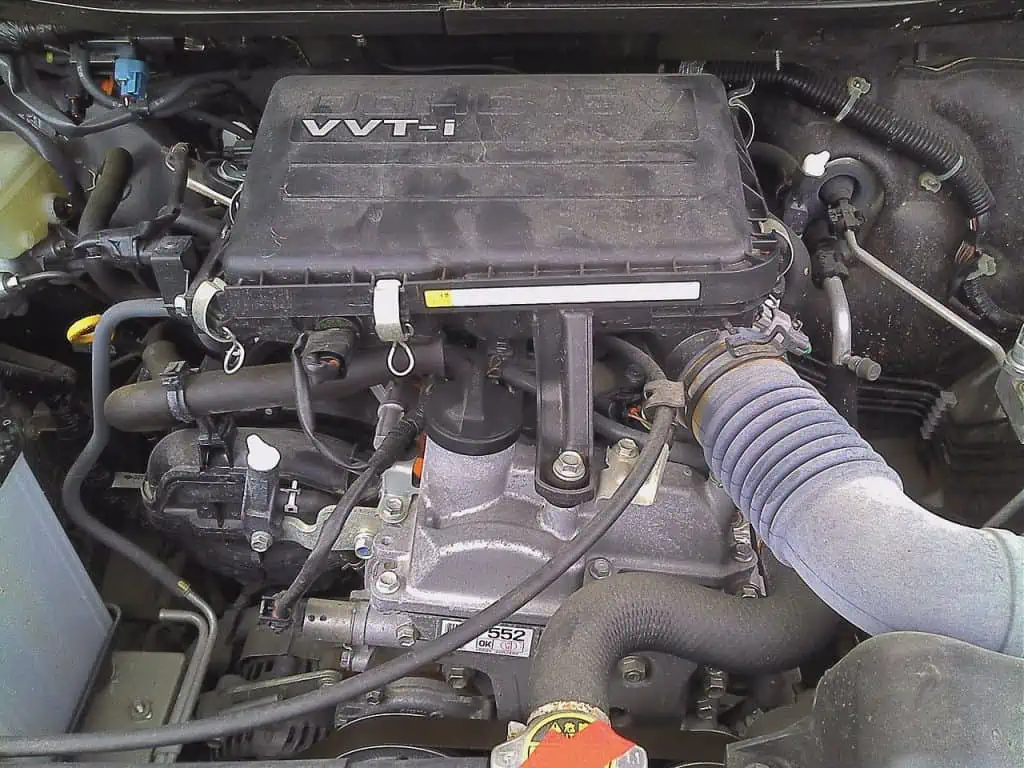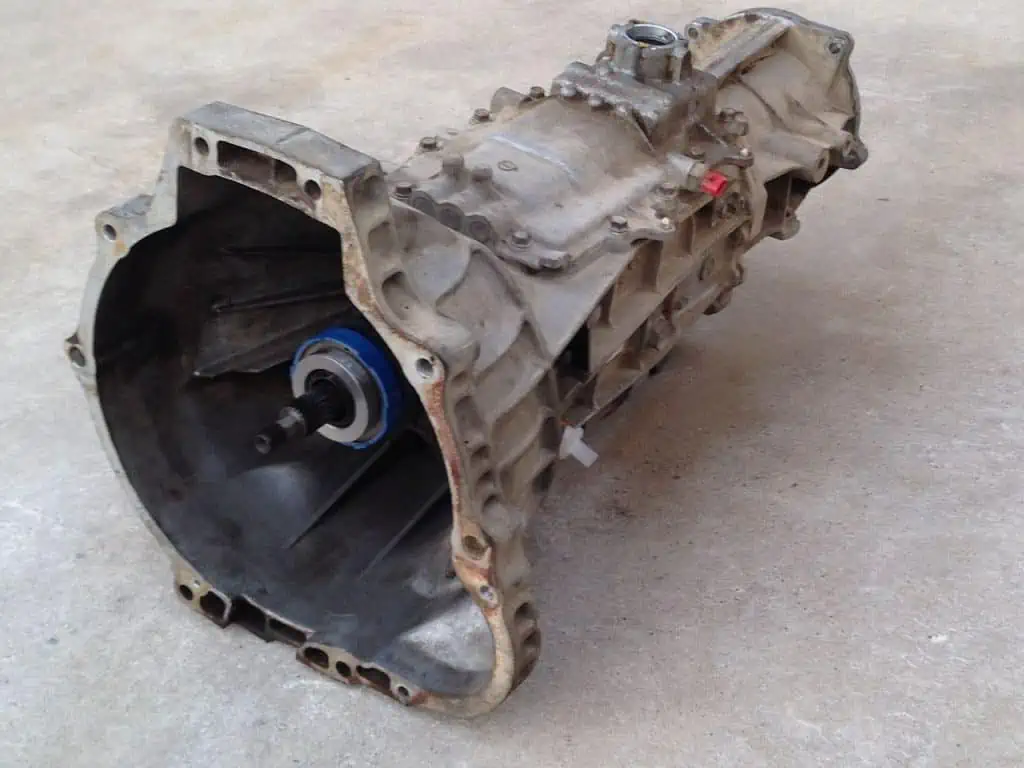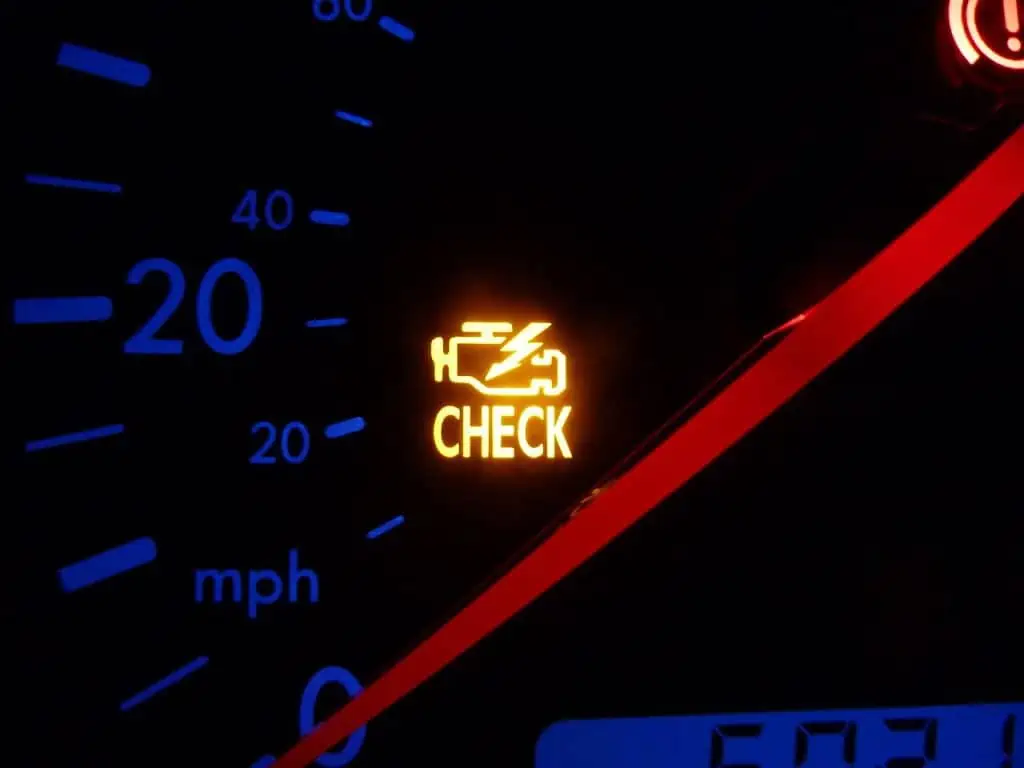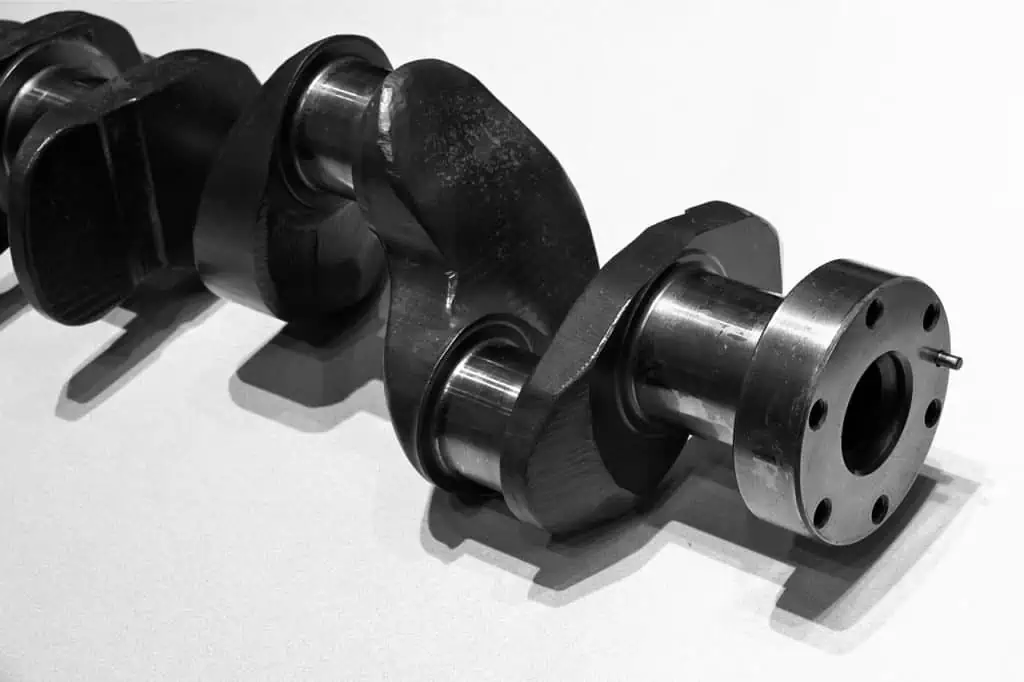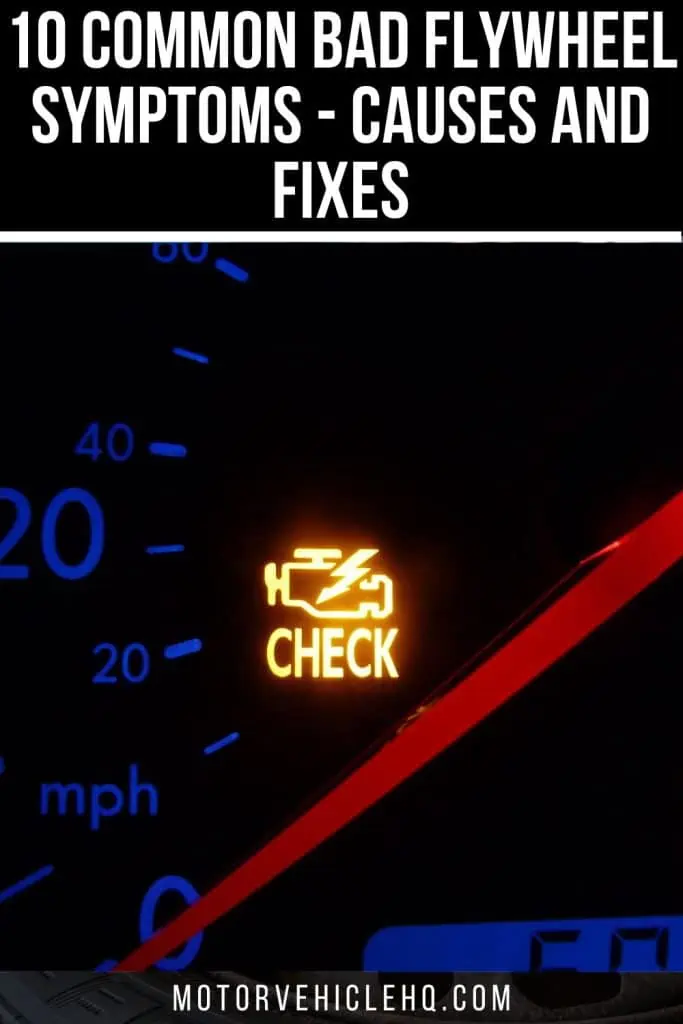The powertrain, engine, and gearbox of a vehicle all play a significant role in power production. The automobile flywheel, however, is located somewhere near the end of the engine and is one of the most important components in the operation of a car.
A car’s flywheel serves as a connector between its transmission and clutch. When a vehicle is slowed down, it controls how smoothly the gears change and provides the power to accelerate more gradually.
It is also connected to the engine’s crankshaft to balance off any imbalance brought on by the engine’s weight. The flywheel is crucial; damage to it causes a variety of automotive problems, from a noisy clutch and sounds to the car not starting.
Your vehicle’s powertrain determines how powerful your car, truck, or SUV will be. The engine and transmission are both parts of the powertrain of your car, truck, or SUV, and they work together to produce the power necessary for your vehicle to move forward.
Your flywheel is one of the many important parts of your powertrain. You should keep a close lookout for bad flywheel symptoms and take action if you see them since if it’s not functioning properly, it could affect your entire engine.
You wouldn’t want to disregard your flywheel until it is seriously malfunctioning because it might cause serious damage to your car that would cost more to replace.
This carelessness may leave you stranded and prevent your car from starting at all. This article will teach you all there is to know about the flywheel, including how it functions and how to spot a bad flywheel.
An Automobile Flywheel: What Is It?
The flywheel, which resembles a sizable, weighty circular disc, is an essential component of a vehicle.
A Dual mass flywheel section by Cschirp / CC BY-SA 3.0. The flywheel of an automobile connects the clutch and transmission of the vehicle. When a car slows down, it regulates how easily the gears shift and gives it the ability to accelerate more gently. Also, it is attached to the engine’s crankshaft to correct any imbalance that the engine’s weight may cause.
It is attached to the crankshaft of the vehicle and rotates in tandem with the clutch disc to transmit motion to the wheels. The flywheel is crucial to the engine’s ability to deliver power.
It is merely an energy-storing device that, when linked to the back of a crankshaft, conserves rotational energy to engine power for smooth delivery.
Only manual transmission automobiles have flywheels; automatic transmission vehicles connect the engine and transmission through flexplates.
In manual transmission autos, a flywheel helps the gears shift properly when the clutch is engaged and dampens vibrations by leveling out the engine.
Between the engine and the transmission in the back of a car, it provides additional friction for the clutch and engages the starter with its teeth.
As a result, when you turn the ignition key, the starter motor rotates the flywheel, spinning the crankshaft and igniting the engine. A properly functioning flywheel is required for clutch engagement and gear shifting in your car.
Your automobile won’t move when you clutch in a stationary position without a flywheel since there is no momentum provided by the flywheel.
What are the Functions of a Vehicle Flywheel?
Understanding the various roles that a flywheel can play in a car can help you appreciate how important they are to an automobile’s operation. There are flywheels in automobiles, trains, and even buses. In a car, flywheels perform the following tasks:
1. Starting the Engine
The flywheel’s flat surface is sliced into by the gear teeth when the key is twisted and entered, sending power to the engine. The machine’s motor gears whir and rotate with the flywheel.
It causes the flywheel to turn, which causes the crankshaft to turn and initiate the proper engine starting procedure. After the engine is running, the motor gear releases and the flywheel continues.
2. Enhanced Engine Speed
The mass of the flywheel uses inertia to help the crankshaft turn while the pistons are firing, maintaining rotational speed and ensuring that the engine runs smoothly.
3. Balance of Engines
The pistons at the center of the crankshaft cause the engine to vibrate as they fire. The flywheel is attached to the crankshaft and stabilizes the engine’s side-to-side swaying for a more evenly distributed weight. This add-on aids in lowering the car’s rate of vibration.
4. Reducing Drivetrain Stress
By stabilizing the engine’s movement and reducing wear and tear on the rest of the drivetrain, the flywheel lowers the load placed on the car’s drivetrain.
The universal joints that the driveshaft employs while operating are continually changing in angle. These kinds of joints experience less frictional wear because of the flywheel.
A cutaway dual mass flywheel by Mcapdevila / CC BY 3.0. One of your powertrain’s many crucial components is the flywheel. To prevent damage to your entire engine, you should keep a close eye out for signs of a faulty flywheel and act if you notice them. Because it could result in major damage to your car that would be more expensive to fix, you wouldn’t want to ignore your flywheel until it is seriously malfunctioning.
5. Manipulation of Weight
The precise performance of an engine is dependent on the flywheel’s weight. The machine can operate with weights that may have bogged down the engine thanks to its extremely heavy flywheels.
Flywheel weight can be adjusted to a car’s needs and specifications, just as heavy flywheels are used in race cars and big trailers and trucks.
What are the Different Kinds of Car Flywheels?
Flywheels come in a variety of sizes, models, and brands, but there are two main types: lightened flywheels, and dual-mass flywheels.
1. The Lightened Flywheels
They are typically seen in race automobiles and performance vehicles; as the name implies, they are extremely light and have a greatly reduced weight.
A flywheel rotates faster when powered by an engine when the extra material is removed to fit a particular one. It makes it easier to shift gears to accommodate the required speed. The lighter flywheels are perfect for race cars because of this speed.
2. The Dual-Mass Flywheels
This variety has a hefty mass as opposed to the lightened one, therefore the double in its name.
The flywheel’s weight helps maintain equilibrium and balance off the engine’s load in heavy-duty vehicles. Because of the slow rotational speed of these flywheels, quick gear changes are not always possible.
What Causes Damage to Vehicle Flywheels?
Premature wear and failure are caused by various circumstances. Some of the most typical causes are listed below:
1. Inappropriate Maintenance
Other parts may suffer damage or alignment issues if replacement starters or clutches are not put in correctly. To further emphasize this point, it is strongly advised to replace the clutch as soon as possible if it sustains damage.
Clutches are significantly simpler and less expensive to replace than flywheels, which will be affected if you leave them.
2. Engine Health and Driving Style
For instance, it might be brought on by sluggish cranking speeds, high loads, driving in the wrong gear, and the difficult engine starts.
3. Too Much Accumulation of Heat
This is frequently brought on by a slipping clutch and can be fatal for the discs since they can deform or shatter.
What are Some of the Usual Bad Flywheel Symptoms?
One of a car’s undervalued components is the flywheel. And just because it’s hidden beneath the engine and rarely seen doesn’t mean you shouldn’t occasionally pay attention to it, especially if your vehicle is heavier.
A typical car engine by Carolla / CC BY-SA 3.0. The weight of the flywheel determines an engine’s precise performance. The machine’s exceptionally hefty flywheels allow it to run with weights that may have slowed the engine down. Just as hefty flywheels are utilized in race cars, large trailers, and trucks, flywheel weight can be altered to suit a car’s requirements.
Sadly, flywheels do not survive indefinitely. As they are often utilized in the car, they gradually start to wear out. There will be certain obvious signs that you won’t be able to ignore if your flywheel is too worn out or broken.
Avoid letting these symptoms persist for too long because doing so will affect the car’s general drivability. The most typical indications of a bad flywheel are listed below.
1. Gears Often Slipping
Gear slippage is what happens when you change gears and then find that your ground speed increases considerably more slowly than the engine speed (RPM).
A slipping flywheel may feel like a slipping clutch because the friction surfaces on the pressure plate and the flywheel are both made to grip the clutch.
Even when the clutch should be fully engaged, if oil or grease were to get on the flywheel’s friction surface, it would affect the clutch’s ability to engage with the flywheel and grab it without slipping (with your foot off of the clutch pedal).
When you shift gears, if the gear keeps slipping, it will undoubtedly affect your driving skills and finally, cause clutch damage.
2. Inability to Shift Gears
You may experience the opposite issue with your gears. Your gears won’t slip; instead, you won’t be able to shift at all.
For this symptom to appear, the flywheel would need to be in pretty terrible health, and other transmission parts might also be harmed. You won’t be able to drive your car at all if you can’t change gears.
3. Burning Smell
A burning odor coming from beneath the hood is another indication that your flywheel is malfunctioning.
This occurs as a result of excessive friction and heat buildup in your engine and gearbox caused by defective parts, which can also cause the nearby components to overheat and smoke.
There could be several different reasons for the burning odor that permeates your passenger cabin.
Due to all the heat produced by the friction in the clutch, a faulty flywheel can be one of those causes. The flywheel may have issues if you have used the clutch when you shouldn’t have.
4. Too Much Clutch Vibrations (Clutch Chatter)
If the clutch pedal vibrates a lot, the flywheel probably has to be replaced. At some point, the vibrations will become so severe that you won’t just feel them coming from the clutch pedal, but also from the floor.
The flywheel in your car may develop excessive runout as you drive, which causes the surface to feel distorted when you press the clutch.
If you’ve ever driven too long with a clutch that was past its prime or overheated your flywheel, you’ve probably harmed the flywheel through metal-on-metal wear. The flywheel will be harmed by clutches that are worn to the rivets.
The close view of an automotive engine by Yones / CC BY-SA 3.0. The flywheel lessens the pressure put on the rest of the powertrain by stabilizing the engine’s motion and minimizing wear and tear on it. The driveshaft’s universal joints constantly adjust their angles as it operates. Because of the flywheel, these joints endure reduced frictional wear.
Because the metal is being heated far higher than its operating temperature, a damaged flywheel may seem blue. an an an an an an an an an an an an an an an a. The flywheel has been heated and cooled, so there might even be metal stains on the surface.
Dual-mass flywheels are one type of flywheel that includes springs. These vibrations could be brought on by the flywheel’s springs if your car has one of these. As dual-mass flywheels cannot be resurfaced like regular flywheels, they will probably need to be replaced.
5. Having Trouble Starting, or Starting Irregularly
The flywheel may have problems connecting with the starter motor if the teeth are broken. Starting the car could be challenging or impossible as a result. You might want to check your starter if you are having trouble starting your car.
6. Stalling of the Engine
It will be much simpler to stall the car and it might idle rough if the aftermarket flywheel is too light for the car (or the driver).
Pushing the clutch in may even cause the car to stall on very light flywheels because the engine speed lowers too quickly for the ECU to provide more fuel and air to make up for the loss in speed.
7. Engine Rumbling When the Clutch Is Engaged
Even when the clutch is engaged, an uneven flywheel may cause vibrations across the entire powertrain.
Make sure all bolts were torqued to specifications if you recently changed the clutch, flywheel, or pressure plate, and use a thread locker if the factory service manual recommended it.
Because the flywheel contains a significant amount of energy, it is quite dangerous if it becomes loose or breaks apart while the vehicle is moving.
The flywheel is hefty, and if everything isn’t balanced and lined up just right, it might cause the car to shake quite a bit.
8. Your Dashboard Displays the Check Engine Light On
The check engine light on your dashboard, which denotes an issue with your drive axle shaft circuit, is one final indication that your flywheel is failing or has already failed.
If this issue isn’t resolved right away, it will only get worse with time, causing further problems including overheating and damage to other components in both systems.
9. Whining Sounds Upon Starting Your Vehicle
Pay attention to strange noises whenever you start your automobile in the morning. The flywheel is probably failing or has already failed if you hear a loud metallic whining noise emanating from underneath the hood.
If your starter motor fails, the same sound may be heard, so be careful to inspect all parts before making any unnecessary replacements. If at all feasible, start by checking the fluid levels in both compartments. Then, examine each issue one at a time until you identify the root of the issue.
An automotive manual transmission by Typhoon / CC BY-SA 3.0. Flywheels are only seen in automobiles with manual transmissions; in automobiles with automatic transmissions, the engine and transmission are connected via flexplates. A flywheel in a manual transmission car levels out the engine to reduce vibrations and aids in proper gear shifting when the clutch is applied. It gives the clutch more friction and engages the starter with its teeth in the back of a car, where the engine and transmission are located.
To check your car and have repairs completed as quickly as possible, stop by or give us a call if you see any of these symptoms while driving.
10. Weak Acceleration Performance
Poor acceleration performance is another indication that your flywheel is failing. Once more, the flywheel can impact how quickly your car accelerates since it aids in the power transfer from the engine to the transmission.
Moreover, you’ll notice a sluggish or jerky acceleration if there are issues with it, which can place a lot of strain on your engine and transmission.
A Car Flywheel: How Long Should It Last?
You already know how crucial the flywheel is to the overall health of your car. Any flaws with it could cause you serious problems because it transfers a lot of power from your engine straight to your transmission.
If your flywheel fails unexpectedly, your car’s wheels could lose all of their power. Because of this, you must be aware of the bad flywheel symptoms and their potential onset times.
In general, when you initially purchase a car, you shouldn’t have to worry about the flywheel breaking down on you. The typical lifespan of your flywheel should be between 80,000 and 100,000 miles, if not more frequently.
But, given how tightly your flywheel is related to your car’s clutch, you might need to repair it more frequently if you ever experience clutch problems. If you consistently subject your car to a lot of wear and tear, there is also a potential that your flywheel could fail on you earlier than that on its own.
As your old flywheel begins to display bad flywheel symptoms, you’ll know it’s time to replace it. They will let you know that your flywheel has to be replaced as soon as possible because it is no longer performing as it should.
Can You Still Drive a Vehicle with Bad Flywheel Symptoms?
You’re playing with fire if you believe that your car might have a bad flywheel but decide to keep driving it. At first, it might not be the end of the world if your car, truck, or SUV is operating with a bad flywheel. When the bad flywheel symptoms first appear, it can still be able to perform its duties efficiently.
But, it won’t be long until more and more of the bad flywheel symptoms start to manifest. You’ll experience sensations that you have never experienced before and hear sounds coming from the direction of your flywheel.
When you have a bad flywheel, it could even smell like your clutch is burning up. That will prove beyond a doubt that you shouldn’t be operating your vehicle with a damaged flywheel any longer.
If you do, it won’t take long for your damaged flywheel to stop supplying power to the wheels of your car. And if things reach that stage, it might put you and other people in a very dangerous situation.
What Should You Do to Have a Bad Flywheel Replaced on Your Car?
It will be impossible to repair a vehicle with a faulty flywheel. It will require replacement rather than repair. Furthermore, you won’t want to entrust the replacement of your flywheel to just anyone.
The check engine light by Wikiuser100000 / CC BY-SA 3.0. One important sign that your flywheel is failing or has failed is the check engine light on your dashboard, which indicates a problem with the drive axle shaft circuit. If this problem isn’t fixed immediately away, it will only worsen with time, leading to other issues including overheating and harm to other parts of both systems.
It’s one of the most complicated auto repair tasks you’ll ever need to perform, so you’ll want to hire a transmission specialist to complete it.
Your vehicle’s flywheel has to be replaced, thus a mechanic will need to:
- Your vehicle’s whole transmission should be removed.
- Take your car’s defective flywheel out.
- Replace the flywheel in your car.
- Test your transmission after reinstalling it in your vehicle.
Your mechanic will also need to make sure your starter, clutch, and transmission are all in good operating order in addition to doing these measures. To make sure it is functioning properly, they will also need to test your powertrain as a whole.
You’ll need a mechanic on your side who has experience working on transmissions because this will need a lot of labor on the mechanic’s part. They’ll be able to rapidly identify your bad flywheel symptoms and address the issues with your car.
Should You Ever Attempt to Fix a Damaged Flywheel on Your Own?
If you have some mechanical expertise, you could be tempted to attempt an independent diagnosis of your bad flywheel symptoms and take on a flywheel replacement job.
This is never a good idea, let me say it again. As we just discussed, changing a flywheel is a difficult task that is best left to the experts.
You might have some success removing your vehicle’s old flywheel. Therefore, you must be quite accurate while mounting a new flywheel. To achieve the finest results, a flywheel must be installed in precisely the appropriate location and fastened correctly.
If you don’t, it can result in engine and gearbox damage, necessitating future more costly repairs. This is why you should hire a transmission expert to repair a flywheel instead of attempting to do it yourself.
What Is the Cost of Replacing a Flywheel?
We briefly mentioned earlier that the good news about flywheels is that they typically don’t need to be replaced all that frequently. The bad news is that when you need to replace them, it will cost a lot of money to do so.
While some flywheels may just set you back a few hundred dollars in parts, others will set you back at least a few hundred. Additionally, since changing a flywheel requires a lot of time, the cost of labor alone may reach $500.
It is a good idea to have a backup plan in case the backup fails. As a result, it ranks as one of your powertrain’s most pricey components to replace. You should still be on the lookout for bad flywheel symptoms and schedule servicing accordingly despite this.
But, it should motivate you to attempt to generally treat your automobile more gently to lessen the likelihood that you will need to replace the flywheel.
Additional things to keep in mind;
It’s crucial to keep in mind that several things will affect how much a replacement flywheel repair will cost. It’s a good idea to acquire a second opinion if you have any doubts about the validity of the information presented. These recommendations may be helpful:
An automotive engine’s crankshaft by Alex Kovach / CC BY 2.0. The engine vibrates as a result of the pistons in the crankshaft’s center firing. The engine’s side-to-side sway is stabilized by the flywheel, which is fastened to the crankshaft and helps distribute weight more evenly. This accessory helps to reduce the rate of vibration in the vehicle.
- First, get quotes from a variety of businesses, including dealerships.
- Find out the parts and labor costs for each flywheel replacement.
- Check to see whether you have a warranty that will pay for your repairs.
- Determine how much you can afford to spend upfront, taking into account any additional costs for labor and parts.
- For further details about your vehicle, including manual engine starter diagrams (if available) and service rankings, visit our website.
- As soon as you notice any issues with your car, get a price estimate from a professional.
Is the Cost of Replacing the Flywheel Worth Incurring?
After learning how much it will cost to address bad flywheel symptoms and replace the flywheel, you may be considering if the expense is justified. The response is that it depends!
You will be forced to pay to have a new flywheel fitted in your car if you plan to keep driving it for at least a few more years. It is simply not possible to operate a car with a damaged flywheel.
But, replacing a faulty flywheel after seeing some bad flywheel symptoms would not make much sense to you if you have an older automobile that might not even be worth the expense of flywheel replacement.
Instead of spending more than $1,000 to correct a flywheel issue, you might think about getting rid of your car.
The Flywheel vs. the Flexplate
Flex plates and flywheels are frequently confused, despite having similarities and possibly serving comparable functions. A flexplate and a flywheel are very different from one another in many ways. Like;
1. The Transmission
Vehicles with automatic transmissions typically have a flexplate, while those with manual transmissions typically have a flywheel.
2. The Appearance
The flywheel is strong and heavy and has a sizable smooth flat surface, but the flexplate is considerably thinner and lighter and should flex across the center axis as rotation speed changes.
3. Place in the Car
Although they are both connected to the transmission, the flexplate and flywheel converge at various locations. The flywheel is fixed to the crankshaft and the clutch pedal, whereas the fly plate is to the crankshaft and the torque converter.
4. Variety of Bolts
Flywheel and flexplate bolts cannot be used interchangeably. The flywheel bolts are shooter and always star-shaped, but the flexplate bolt is longer and has a flange head.
The Conclusion
The last thing you want is for your flywheel to malfunction and trigger an unexpected failure of your car. If the flywheel is damaged, your automobile might no longer be able to be driven.
The good news is that your flywheel won’t typically suddenly stop working. In the weeks before your flywheel fails, you’ll start to experience some of the bad flywheel symptoms.
When you see them, make a mental note of them and book service for your automobile immediately.
As you may probably guess, your flywheel may also be having problems whenever you feel like your clutch is having problems.
You should have your flywheel and clutch examined to determine the cause of the troubles rather than ignoring them. You don’t want to ignore bad flywheel symptoms and allow a small problem to become out of hand.
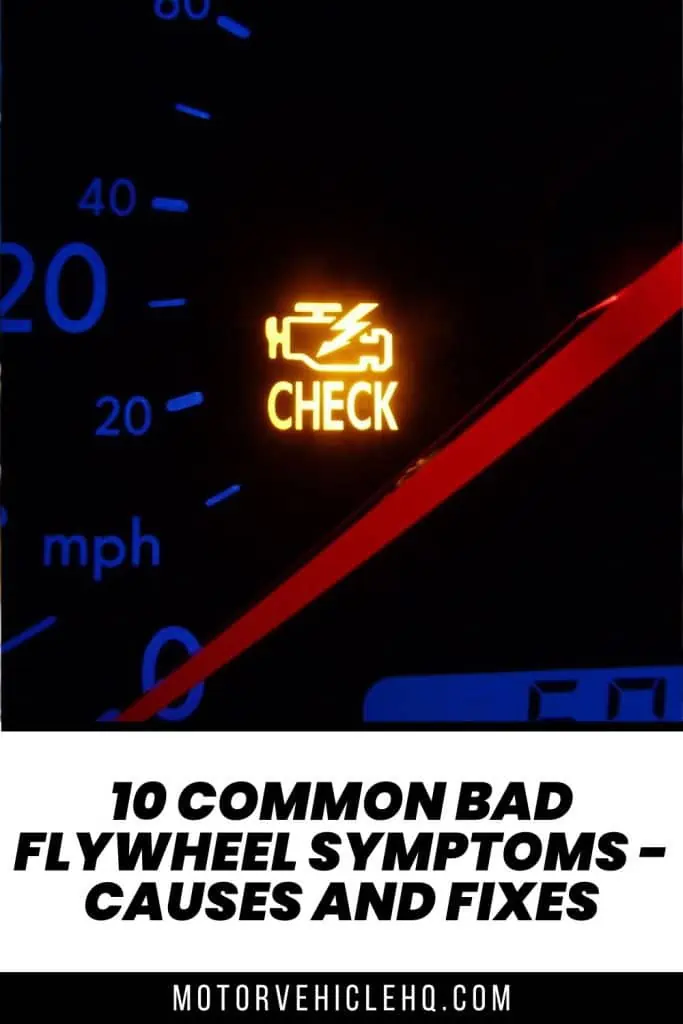
The check engine light by Wikiuser100000 / CC BY-SA 3.0

Jim Wicks is the founder of MotorVehicleHQ. With over two decades of experience in the automotive industry and a degree in Automotive Technology, Jim is a certified car expert who has worked in various roles ranging from a mechanic, car dealership manager, to a racing car driver. He has owned more than 20 cars over the past 15 years. Ask him about any vehicle you see on the road and he can tell you the make, model and year. He loves the aesthetics of all things cars, and keeps his vehicles in pristine condition.
In his free time, Jim enjoys getting his hands dirty under the hood of a classic car or taking long drives along the country roads. His favorite car? A 1967 Shelby GT500, a true classic that, according to Jim, “represents the pure essence of American muscle.”
